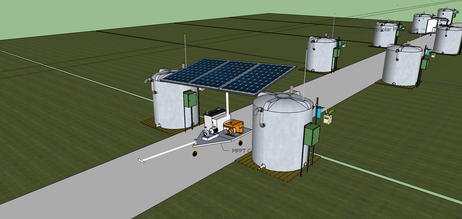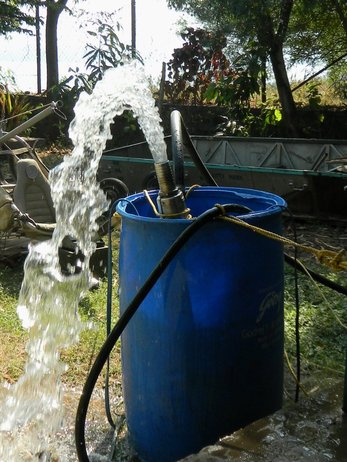Open Innovation Search for a Green Pump for India
Published Aug-08-15Breakthrough:
Innovative solar and renewable energy pumps for farmers in Bihar in East India.
Company:
Greenpeace, India
The Story:
 The increasing success of open innovation in many firms has led to the adoption of its principles by some non-profit organisations as a way to solve pressing problems. Emphasizing the use of external knowledge and involving diverse smarts from different backgrounds has become a viable way to pursue an innovation agenda. Today, organisations are benefiting from our 21st-century do-it-yourself culture and engaged citizens and specialized communities.
The increasing success of open innovation in many firms has led to the adoption of its principles by some non-profit organisations as a way to solve pressing problems. Emphasizing the use of external knowledge and involving diverse smarts from different backgrounds has become a viable way to pursue an innovation agenda. Today, organisations are benefiting from our 21st-century do-it-yourself culture and engaged citizens and specialized communities.In 2013, Greenpeace launched its Energy [R]evolution Challenges, an open innovation initiative to find renewable energy solutions that can help reduce carbon dioxide emissions and tackle climate change. A supporting aim of the project is to create a community of innovators around novel solutions that will help accelerate their adoption.
Dirty Pumps
The first challenge concerned Indian agriculture. The country is a large emitter of CO2 and contributing to this problem are millions of small farming businesses that rely on diesel powered irrigation pumps to water their crops.
There are concerns about these pieces of equipment, both for the farmers and for the environment. Fuel costs go up making the pumps too expensive to operate, and pollution threatens air and water quality. According to an article in 'The Hindu Business Line', there are approximately 10 million of these pumps throughout India.
The solution is seen as a renewable energy powered pump that is affordable to the small Indian farmer while also being able to meet all their needs. At the time of the challenge, no such product existed in the market in India.
The target group of this OI contest were small and medium-scale Indian farmers in Bihar state in East India, and in its challenge brief, Greenpeace requested a pump that was:
• Able to deliver enough water to irrigate 1 hectare of such typical Bihar produce as wheat and
vegetables
• Portable
• Robust enough for the Bihar climate and rural conditions
• Cost less than 100,000 rupees (approx. US$1,500)
A €30,000 (approx. US$33,000) prize pool was available with four categories of prizes, including jury prizes and community prizes. Entries were judged on capability, viability, affordability and feasibility.
More than 1,500 people in 58 countries participated, submitting over 250 innovative ideas. Solvers uploaded their concepts to the contest website and these were viewable by members of the public (and competing teams) who passed comments and suggested improvements. Some designers took these thoughts into consideration and adapted their designs.
Among the winning solutions (as decided by jury and community voting) were:
A high-tech solar and biomass hybrid pump that uses solar and biomass resources, both of which are in plentiful supply in Bihar
A single solar pump for India - a submersible pump suitable for direct operations by solar panels or deep cycle batteries
Solar pump for Bihar - a solar pump that can deliver up to 70,000 liters per day from a 4 inch bore well
Next Steps
The winners were awarded their prizes in Patna, the capital of Bihar state. There they met funders, local experts and budding entrepreneurs to organize prototyping and field testing.
Next Story »



